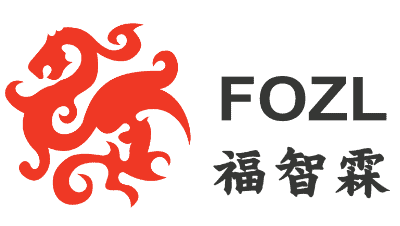
Singapore Management University establishes the Urban Institute to explore sustainable development solutions
2024-01-24
Singapore-China mutual visa-free travel to start on February 9, 2024
2024-01-29

Definition of Related Parties in Transfer Pricing
Under Singapore’s corporate tax laws, the definition of “related parties” is provided under Section 2(1) 【1*】of the Singapore Income Tax Act (SITA) as follows:
“A related party, in relation to a person【2*】, means any other person who, directly or indirectly, controls that person, or is controlled, directly or indirectly, by that person, or where he and that other person, directly or indirectly, are under the control of a common person”
Below is the example of direct control, indirect control, and common control:

The SITA does not specify any control or ownership thresholds for two persons or entities to be considered related parties. This definition of related party is pertinent in identifying transactions that should satisfy the arm’s length principle (Section 34D) and the requirement to prepare transfer pricing documentation (Section 34F). The Singapore Transfer Pricing Guidelines (TPG) 【3*】reiterates that two persons are related parties with respect to each other if:
(a) Either person, directly or indirectly, controls the other person; or
(b) Both persons are, directly or indirectly, controlled by a common person.
The fundamental principle underpinning the identification of related party transactions for transfer pricing purposes revolves around the capacity to exert control.
While International Financial Reporting Standards (IFRS)【4*】 defines “related parties” for accounting purposes, this definition may not align with those outlined in the SITA and TPG for transfer pricing purposes. From a tax law perspective, the Singapore Income Tax Act (SITA) definition applies when it comes to transfer pricing.
However, it is important to note that the definition of “Related Parties” may vary across different countries, based on each country’s domestic laws and regulations and subject to their respective jurisdictions or tax authorities. In the following section, we’ll specifically discuss the definition of related parties in China.
Definition of Related Party in China
According to the provisions of the Enterprise Income Tax Law and Implementation Rules of the People’s Republic of China【5*】《中华人民共和国企业所得税法实施条例》, related parties are defined as enterprises, other organizations, and individuals that have one of the following relationships with an enterprise:
(a) There exists a direct or indirect control relationship in terms of capital, operations, purchasing, and sales;
(b) They are directly or indirectly controlled by a third party;
(c) They have other related relationships in terms of interests.
On June 29, 2016, the State Administration of Taxation (SAT) issued the Public Notice of the State Administration of Taxation〔2016〕42【6*】, to further provide the criteria and ownership thresholds for the purpose of determining a related party. The following table provides an outline comparing the meaning of related party in China and Singapore for transfer pricing purposes.

【1*】For more information on Section 2(1) of the Singapore Income Tax Act (SITA),refer to URL link: https://sso.agc.gov.sg/Act/ITA1947?ProvIds=P11-#pr2-
【2*】 Person is defined under Section 2 of the SITA to include a company, body of persons and a Hindu joint family. Company is defined under Section 2 of the SITA to mean any company incorporated or registered under any law in force in Singapore or elsewhere. For more information, refer to Section 2(1) of the Singapore Income Tax Act (SITA): https://sso.agc.gov.sg/Act/ITA1947?ProvIds=P11-#pr2-
【3*】 Refer to Transfer Pricing Guidelines (TPG) No 3.24 for the definition of related party: https://www.iras.gov.sg/media/docs/default-source/e-tax/etaxguide_cit_transfer-pricing-guidelines_6th.pdf?sfvrsn=26bfb1a6
【4*】 For more information on IAS 24 — Related Party Disclosures,refer to URL link: https://www.iasplus.com/en/standards/ias/ias24 or https://www.ifrs.org/content/dam/ifrs/publications/pdf-standards/english/2022/issued/part-a/ias-24-related-party-disclosures.pdf?bypass=on
【5*】For more information on Enterprise Income Tax Law and Implementation Rules of the People’s Republic of China, refer to URL link: 中华人民共和国企业所得税法实施条例__增刊2019·1国务院公报_中国政府网 (www.gov.cn)
【6*】For more information on Public Notice of the State Administration of Taxation〔2016〕42, refer to URL link: https://www.chinatax.gov.cn/n810341/n810755/c2208516/content.html or Transfer Pricing Country Profile – People’s Republic of China (oecd.org)
【7*】For more information on Enterprise Income Tax Law and Implementation Rules of the People’s Republic of China, refer to URL link: 中华人民共和国企业所得税法实施条例__增刊2019·1国务院公报_中国政府网 (www.gov.cn)

